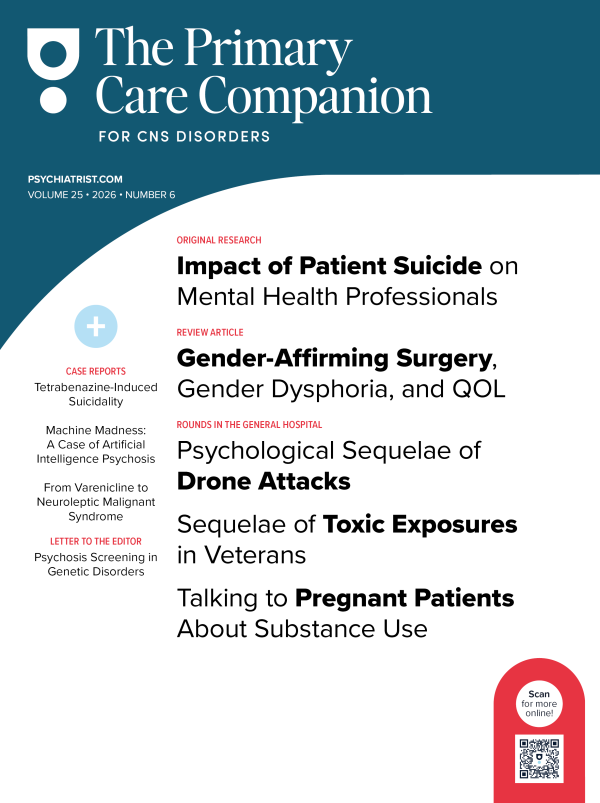Objective: To conduct a post hoc evaluation of the prevalence of clinically significant pain and the efficacy of duloxetine in patients with generalized anxiety disorder (GAD) and concurrent pain.
Method: Data from two 9- to 10-week double-blind, placebo-controlled, randomized clinical trials of duloxetine (60 to 120 mg) in DSM-IV-defined GAD were analyzed (study 1 was conducted from July 2004 to September 2005; study 2 was conducted from August 2004 to June 2005). Efficacy was assessed with the Hamilton Rating Scale for Anxiety (HAM-A), visual analog scales (VAS) for pain, the Hospital Anxiety Depression Scale (HADS), the Clinical Global Impressions-Improvement of Illness (CGI-I) scale, the Patient Global Impressions-Improvement (PGI-I) scale, and the Sheehan Disability Scale (SDS) global functional impairment scale.
Results: Of 840 patients randomly assigned to treatment, 61.3% (302 duloxetine, 213 placebo) had VAS scores >= 30 mm on at least 1 of the pain scales, indicating clinically significant pain. Among those patients with concurrent pain at baseline, change from baseline to endpoint in the HAM-A total score (42.9% change in mean scores for duloxetine, 31.4% for placebo), HADS anxiety scale (40.3% vs. 22.8%), HADS depression scale (36.1% vs. 20.5%), HAM-A psychic factor (45.9% vs. 29.9%), and SDS global functional improvement score (45.5% vs. 22.1%) was significantly (all p’s < .001) greater for duloxetine compared with placebo. Improvement on the CGI-I (p = .003) and PGI-I (p < .001) was also significantly greater for duloxetine. Response (HAM-A total score decrease >= 50%) (49% vs. 29%) and remission (HAM-A total score <= 7 at endpoint) (29% vs. 18%) rates were significantly greater for duloxetine compared with placebo (p < .001 and p = .041, respectively). Duloxetine demonstrated statistically significantly greater reduction in pain on all 6 VAS pain scales (all p’s < .001 except headaches with p < .002) (for duloxetine, percent change in means from baseline to endpoint ranged from 40.1% to 45.2% across the 6 VAS scales; for placebo, 22.0% to 26.3%).
Conclusion: Duloxetine, relative to placebo, improves anxiety symptoms, pain, and functional impairment among patients with GAD with concurrent clinically significant pain.
This PDF is free for all visitors!


